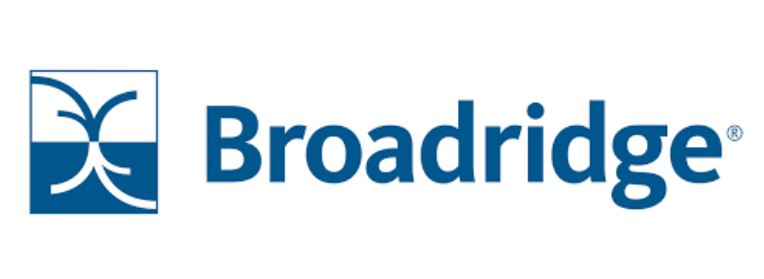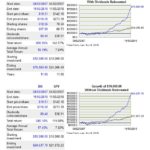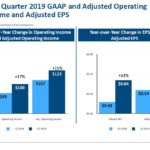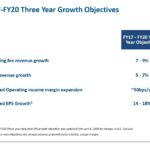Contents
Summary
- BR shares dropped ~9.7% upon the November 6, 2018 release of good Q1 2019 results and the reaffirmation of encouraging FY2019 projections.
- In my August 7th article I indicated I was of the opinion that BR shares were overvalued and that investors should wait for BR shares to pullback.
- BR’s FY2017 – FY2020 growth objectives call for Recurring Fee Revenue Growth of 7% - 9%, Total Revenue Growth of 5% - 7%, Adjusted Op Income Margin Expansion of ~50 bps/year, and Adjusted EPS Growth of 14% - 18%.
- I view the ~9.70% pullback in BR’s share price from the November 5th closing price and subsequent to the release of Q1 2019 results as highly favorable and have acquired additional shares.
Introduction
I have written several articles about Broadridge Financial Solutions (BR). In my most recent article of August 7, 2018, I wrote:
‘Long-term shareholders have generated significant returns but its current valuation appears to be somewhat stretched.’
‘The stock might be somewhat richly valued at this stage (in my opinion) but if we get a long overdue market correction, this company’s stock price will likely retrace to a more reasonable valuation at which time I would ‘back up the truck’.’
And in the version of the article restricted to subscribers I concluded with…
‘BR has certainly rewarded me well and I continue to view it as a company with a very promising future. Having said this, I think Mr. Market has bid up the price to a level where perfection is expected. At some stage, I envision BR will retrace to a more reasonable valuation; I do not expect BR to retrace to a PE in the teens but somewhere between the low – mid 20s seems more reasonable.’
Well…fast forward to November 6th and BR has released Q1 results. Results were good but with the stock being richly valued, Mr. Market hammered BR’s shares knocking ~9.7% from the November 5th closing price of $116.50.
Perfect!
Based on Q1 2019 results, projections provided by management, and my long-term outlook on the company I have acquired 400 BR shares for the ‘side accounts’ within the FFJ Portfolio. These shares are in addition to BR shares held in undisclosed accounts.
Is it possible BR shares could fall further? Of course. I make my investment decisions, however, on the basis of valuation, the company’s long-term prospects, and risk level. I don’t get worked up over stock price gyrations.
Business Overview
An overview of BR and how it has performed subsequent to its spin-off from Automatic Data Processing (ADP) has been provided in previous articles: February 9, 2017, May 13, 2017, August 11, 2017, February 9, 2018, July 16, 2018, and August 7, 2018 articles.
Broadridge and UBS Americas Announcement
On October 25th, BR and UBS announced ‘an innovative strategic partnership where UBS Wealth Management USA will be the anchor client on Broadridge's new wealth management industry platform. The Broadridge Wealth Platform is a next-generation open platform that will solve a key financial services challenge by creating a modern, industry-level wealth management best-in-class technology solution. The platform enables wealth managers to drive their business to the next level while mutualizing investments in technology, innovation and security.’
In my opinion, UBS’s selection of BR is an endorsement of BR’s ability to deliver enterprise-scale solutions and is an important step for BR in its objective of building another long-term growth engine.
BR’s Performance vs S&P500 since March 30, 2007 IPO
The following chart reflects BR’s performance relative to the S&P500. The website from which I obtained this graph has not yet been updated to account for the November 6, 2018 plunge in BR’s stock price.
Despite the 9.70% correction in BR’s stock price and the ~24% retracement from its 52 week high, it is readily apparent long-term BR shareholders have been richly rewarded.
Source: TickerTech
Q1 2019 Results
BR’s Q1 2019 earnings release of November 6th clearly lays out how the company has performed in Q1. BR is benefitting from a combination of continued organic growth, higher event-driven revenues and a lower tax rate and while we are only 1 quarter into FY2019, management has indicated BR is currently on track to achieve FY2019 financial guidance.
If you look at the company’s performance over the past several years you will notice the company has grown organically and by acquisition. Growth by acquisition works extremely well if the acquired entities can be quickly integrated and clients/prospects see a true value to having the existing business and recently acquired business under one banner. So far, BR’s acquisitions have worked out well.
I draw to your attention to BR’s Balance Sheet in which Goodwill comprises just over 37% of Total Assets and Long-Term Debt has grown to ~$1.144B. I am not overly concerned with BR’s debt level because if you look at the notes in the ‘Borrowings’ section of BR’s Q1 financial statements you will see that the interest rates attached to the long-term debt are very attractive. In addition, look at the principal payment due dates. BR has ample time before it needs to repay this debt and it should have generated substantial Free Cash Flow between now and the time these obligations are due for repayment.
Source: BR - Q1 2019 10Q – September 30, 2018
Source: BR – Q1 2019 Earnings Presentation – November 6, 2018
I draw to your attention BR’s FY2017 – 2020 3 Year Growth Objectives which we provided when FY2018 results were released August 7, 2018.
Source: BR – Q4 2018 Earnings Presentation – August 7, 2018
BR’s growth objectives and its ability to have met/exceeded its objectives subsequent to having become a publicly traded company in 2007 gives me some level of confidence that BR will increase in value over the next few years.
Credit Ratings
There has been no change to BR’s credit ratings from Moody’s and S&P Global subsequent to my last article and there is no indication the credit ratings are under review.
Moody’s continues to rate BR’s long-term debt as Baa1 which is classified as lower medium grade. Standard & Poor’s continues to rate the debt BBB+ which is also lower medium grade.
These ratings are satisfactory for my purposes.
Free Cash Flow (FCF) Conversion
BR’s FCF levels in 2012 – 2018 were $0.244B, $0.22B, $0.334B, $0.365B, $0.362B, $0.402B, and $0.596B.
The projected range of FCF for FY2019 is $0.565B -$0.615B.
This favorable trend in FCF is what enables BR to:
- pursue acquisition opportunities;
- repurchase shares;
- increase dividends;
- retire its long-term debt obligations as they come due.
Dividend, Dividend Yield, and Dividend Payout Ratio
In my August 7, 2018 article I indicated that on August 6, 2018 BR's Board of Directors declared a quarterly dividend of $0.485 per share payable on October 3, 2018 to shareholders of record on September 18, 2018. That was a 33% increase ($1.46 increased to $1.94) in BR’s dividend and it marked the 11th consecutive year in which BR had increased its annual dividend subsequent to having been spun off from ADP.
BR does not keep the dividend history segment of its website current. As I compose this article the most recent quarterly dividend reflected on the site is the $0.365/share dividend that was distributed July 3, 2018. I can assure you that BR has subsequently increased its quarterly dividend. The increase was announced when BR released its Q4 results and I certainly noticed a jump in the dividends I received on October 3, 2018.
Investors who focus exclusively on dividend yield are apt to disregard BR as a potential investment given that BR’s dividend yield is typically sub 2%.
If you are open to investing in lower dividend yielding companies which have a high dividend growth rate then BR is worthy of consideration.
When I wrote my August 7th article where I viewed BR shares as overvalued, BR was trading at ~$129. The new $1.94 annual dividend provided investors with only ~1.5% dividend yield.
Fast forward to November 6th after the pullback and the dividend yield is closer to ~1.84% ($1.94/~$105).
In my opinion, far too many investors focus on dividend yield and do not pay sufficient attention to the dividend payout ratio. I am of the opinion that one needs to seriously question whether stocks with very high dividend yields are safe.
When I wrote my August 7th article, BR reported FY2018 Diluted EPS (GAAP) of $3.56 and Adjusted Diluted EPS (Non GAAP) of ~$4.19. At the time, BR was projecting Diluted EPS (GAAP) growth of 12% - 16% ($3.99 - $4.13) and projected Adjusted Diluted EPS (Non GAAP) of 9% - 13% ($3.88 - $4.02). When I used the mid-point of these estimates ($4.06 and $3.95), the new $1.94 annual dividend represented a dividend payout ratio of ~47.8% and ~49.1%. At the time I was of the opinion that BR would have no difficulty in servicing its dividend.
With the release of Q1 results and reaffirmation of FY2019 projections I am of the opinion BR will have no issue in being able to service, and continue to increase, its dividend.
The September 30, 2018 share count has not really changed from that reported as at the most recent fiscal year end (June 30, 2018). This would suggest to me that BR was of the opinion that the use of Free Cash Flow would be better employed elsewhere and/or that its shares were somewhat expensive.
Valuation
In my August 7th article I indicated that BR had projected Diluted EPS (GAAP) growth of 12% - 16% and adjusted Diluted EPS (Non GAAP) growth of 9% - 13%.
At the time, I indicated that on the basis of FY2018 Diluted EPS (GAAP) and adjusted Diluted EPS (Non GAAP) of $3.56 and $4.19, investors could expect Diluted EPS (GAAP) of ~$3.99 - ~$4.13 and adjusted Diluted EPS (Non GAAP) of ~$4.57 - ~$4.73.
Using the August 7, 2018 $129.17 closing stock price I arrived at a forward diluted PE range of ~30.8 – ~36.3 and a forward adjusted diluted PE of ~27.3 - ~28.3. I viewed these levels as lofty and indicated I would refrain from acquiring additional shares until such time as BR’s valuation retraced to the low – mid 20s (based on Diluted EPS (GAAP) results).
Fast forward to November 6th and BR’s shares have retraced to ~$105. Using this share price and the reaffirmed guidance, BR’s forward PE is ~25.4 - ~26.3 while its forward adjusted PE is ~22.2 - ~22.98. I now view BR’s valuation as being far more reasonable than it was just3 months ago.
Final Thoughts
I view BR’s long-term prospects as extremely positive. I was hesitant to add to my position the last time I wrote about BR. Now that BR:
- has retraced ~24% from its 52 week high of $138.24 set September 14, 2018;
- produced decent Q1 2019 results;
- reaffirmed its FY2019 guidance;
I view BR as being reasonably valued. This is why I have acquired 400 shares for the FFJ Portfolio.
I wish you much success on your journey to financial freedom.
Thanks for reading!
Note: I sincerely appreciate the time you took to read this article. Please send any feedback, corrections, or questions to [email protected].
Disclaimer: I have no knowledge of your individual circumstances and am not providing individualized advice or recommendations. I encourage you not to make any investment decision without conducting your own research and due diligence. You should also consult your financial advisor about your specific situation.
Disclosure: I am long BR and ADP.
I wrote this article myself and it expresses my own opinions. I am not receiving compensation for it and have no business relationship with any company whose stock is mentioned in this article.







